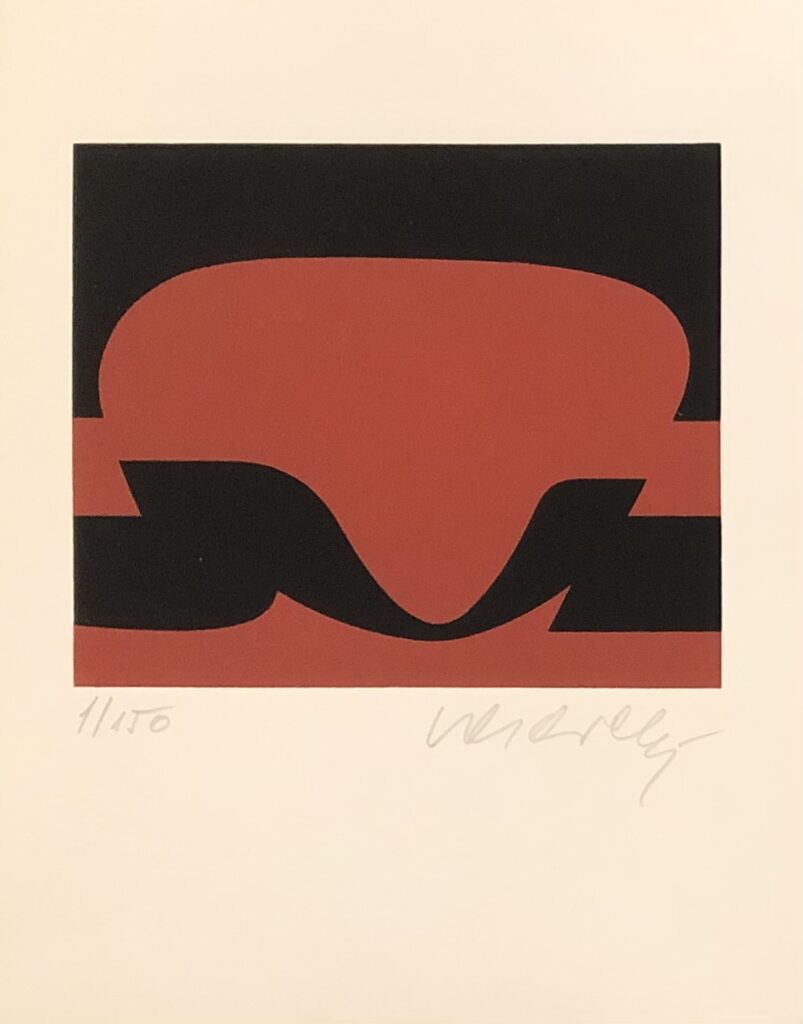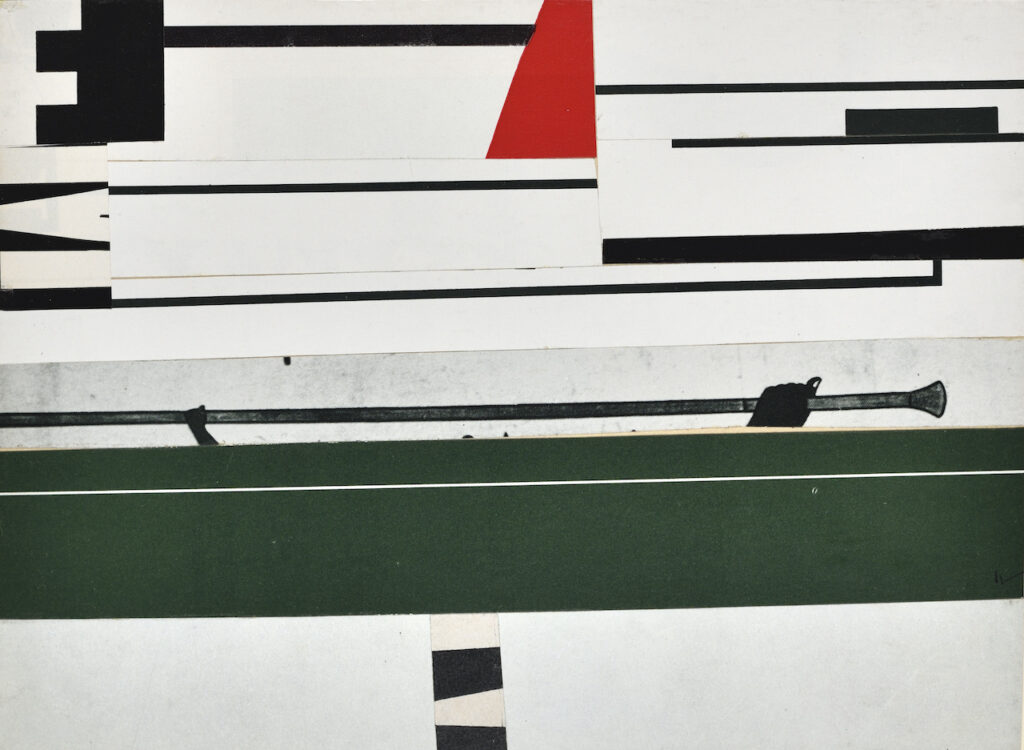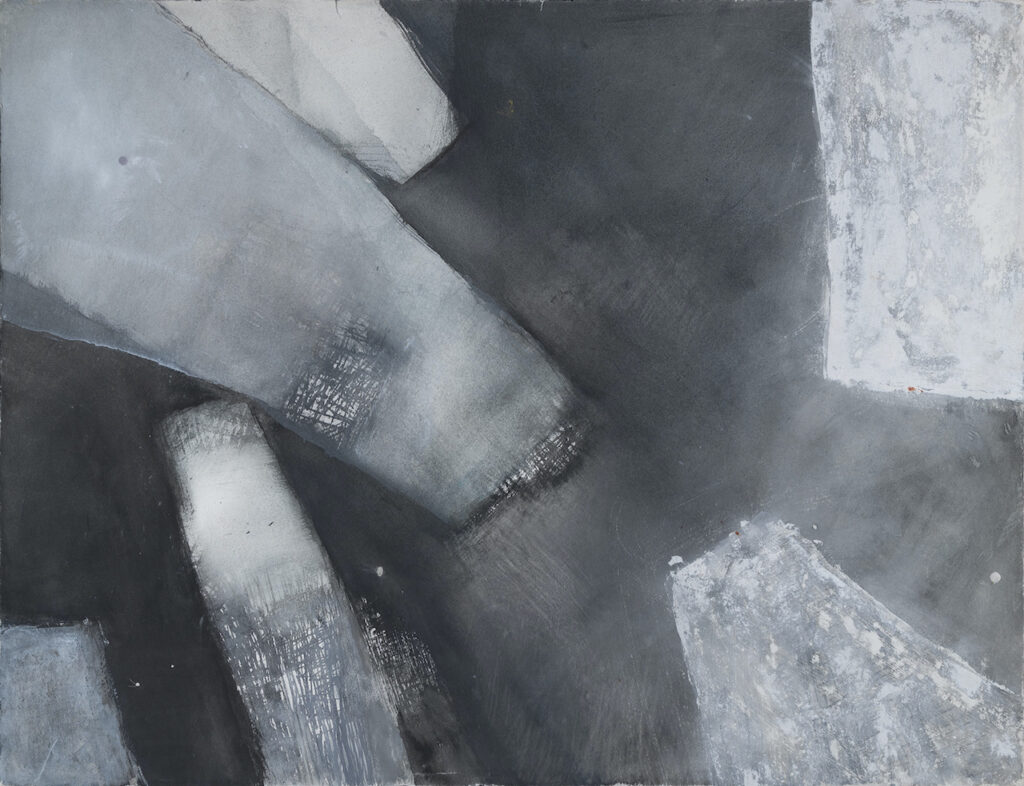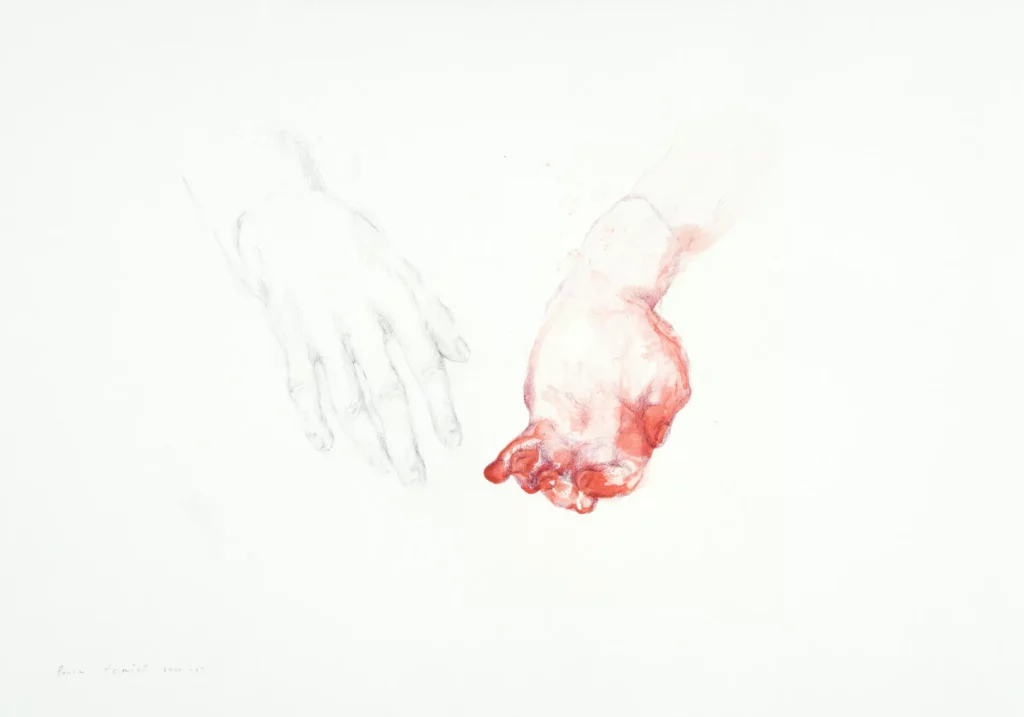Archives: cabinet de dessins
cabinet de dessins
Ancient drawings
The result of extensive research, the ancient drawings cabinet reflects Abraham & Wolff’s ambition to foster a dialogue between works beyond periods and traditional categories. It follows in the footsteps of exhibitions held by Galerie Jocelyn Wolff devoted to Eugène Carrière or the art of grisaille, as well as the show dedicated to Roger Caillois and the art of painted stone presented at Abraham & Wolff.
Bringing together different eras and sensibilities, the inventory spans from the 16th to the early 20th century and includes drawings by Josef Kriehuber (1800–1876), Louis-François Cassas (1756–1827), Pierre Ozanne (1737–1813) or Pierre Lélu (1741–1810). A significant place is also given to anonymous works, whose origins—century, geographical area, or the artistic environment surrounding the artist—can be clarified through in-depth study. This particular selection is guided by the idea that quality does not necessarily depend on a prestigious attribution.
The cabinet embraces a wide variety of styles and subjects: real or imaginary landscapes, fantasies, scenes inspired by Greco-Roman mythology, portraits, and genre scenes, revealing the richness and continuity of drawing practices across the centuries.

After training as an engineer with the Ponts et Chaussées and a period in the studio of Jean-Jacques Lagrenée, Louis-François Cassas travelled with the Duke of Rohan-Chabot to Naples, then to Istria and Dalmatia (present-day Croatia). Twenty years later he was asked to return in order to produce a hundred engraved plates documenting his travels in a region that was still little explored at the end of the 18th century. Our drawing appears to be the first conception for the engraving in the Victoria & Albert Museum, likely produced upon his return to Rome from his first journey in 1782. Several changes were made in the meantime: the figures animating the landscape, the sails of the boats, the trees and shrubs serving as a kind of natural backdrop, the shifting depths of the foaming waters of the falls… Besides offering us a sublime landscape—now a national park—this work demonstrates how this great travelling landscape artist combined documentary topography with artistic refinement.

The dating of this sheet is determined by its watermark, that of the Dutch papermakers Dirk and Cornelis Blauw, associated in 1750. Since Cornelis died in 1762, the drawing can therefore be dated between 1750 and 1762. As the Netherlands exported their paper throughout Europe, this work is not necessarily by a Dutch hand. Here, the author seems not to have assimilated the discoveries of Copernicus or Kepler. The moon, and apparently the planets with their satellites, appear to revolve around an Earth peopled by small human figures next to a church. The orbits are clearly delineated—around the Earth, then around each planet. Stars shine in the cosmos. At the top, the sun sends out rays as well as bolts of lightning. An archangel seems to command it, and clouds form an atmosphere around the sun. These delightful naïvetés remind us that Copernicus’s writings establishing heliocentrism remained on the Church’s Index of prohibited books until… 1835!

In Hesiod’s Theogony, the Titans attempt to seize the celestial realm. The scene depicted here shows Jupiter, wielding his thunderbolt in his right hand and surrounded by other Olympian Gods (including Mercury on the right side of the composition), striking the Titans with lightning. To the left of the angered god stands his eagle, symbol of the link between sky and earth. At the centre of the composition the Titans collapse, among them Typhon, instigator of the uprising.

With three thousand lithographs, hundreds of watercolours, and more than two hundred paintings, Josef Kriehuber was the leading portraitist of Biedermeier Vienna. All the city’s prominent personalities, as well as passing visitors, sat for him: the high aristocracy, writers, musicians (Liszt, Schumann, Schubert, etc.), and of course the imperial family, beginning with Emperor Franz Joseph and Empress Sisi.
KWY







The KWY magazine (1958-1964) was a singular editorial adventure led in Paris by 8 young foreign artists, newly arrived in the capital. Its founders were Portuguese artists Lourdes Castro, René Bertholo, Costa Pinheiro, Gonçalo Duarte, José Escada and João Vieira, soon joined by Bulgarian Christo and German Jan Voss. They were exiles, some fleeing a dictatorship, others a country ravaged by war and Nazism. They chose to settle in Paris, which then radiated the aura of a cosmopolitan cultural capital.
The magazine is a rich, composite art object featuring original silkscreens, photomontages, collages, postcards, soft discs, poetry, theoretical texts, unpublished works and precious documents. Through its 12 issues, we follow the evolution of a group of artists from the informal, gestural or matierist abstraction on display in galleries at the end of the 1950s, to the new art trends in which the group’s members participated – New realism, New figuration, Pop art, gestural abstraction, Lettrism, Fluxus, kinetic art, concrete poetry, etc. In the background, we can make out their personal, dissimilar paths within the Parisian or international networks, which were then pursued independently in Paris, London, Lisbon, Munich or New York. […]
KWY was first and foremost a laboratory for experimentation, in the form of a quasi-collective work, displaying a joyful independence from the various aesthetic currents: the freedom for each to choose his or her own style. (source : Anne Bonnin)
Unreleased editions from the Imre Pán collection
Juhana Blomstedt
Juan Breyten
Camille Bryen
Serge Charchoune
Corneille
Georges Foissy
Henri Goetz
André Heurtaux
Peter Klasen
Jean Legros
Jacques Mandelbrojt
Roberto Matta
Aurelie Nemours
Imre Pán
Nono Reinhold
Pierre Skira
Hugh Weiss
Victor Vasarely




Between 1960 and 1972, the Hungarian-born poet, art critic and curator Imre Pán pursued an intense editorial activity in Paris. Guided by a highly independent spirit, he published almost 150 magazines containing original editions by artists from all plastic horizons: geometric, optical or informal abstractions, post-Surrealist figurations, narratives or those close to the New Realists. The Signe editions (1960-1964), then the Morphèmes editions (1963-1970), which were extended in 1971 and 1972 by the Mini-Musée editions, take the form of notebooks containing a printed text (a study by Imre Pán in most cases, but also texts or poems by artists) and a small-format work on a loose leaf, generally numbered and signed: drawing, etching, collage, watercolour, ink, gouache, silkscreen… These editions are genuine collaborations with artists whose work Pán appreciates and accompanies as closely as possible to the creative process. (source: Marjorie Micucci)
Aurelie Nemours



“Aurelie Nemours’ collages are a surprise. Visual. Plastic. Poetic. For those who are used to, a little distractedly, to the artist’s geometric works of line – horizontal, vertical – and point, to her black and white as rigorous as they are sensual, to her vibrant flat tints of monochrome colours, to the deep, velvety void of a repeated infinity that she unfolds from series to series, her collages from 1965 and 1968, produced at the request of Imre Pan for the editions he tirelessly designed, interwoven, rhizomatic, fragmented, and whose titles he constantly repeated (Signe, Signe Morphèmes, Signe L’art du dessin, L’estampe moderne, Morphèmes, Mini-Musée, Préverbes… ), prove, upon discovery, to be sets of a singular unity and, above all, a fruitful step aside for the artist. ” (source : Marjorie Miccuci)
Elodie Seguin


Exploring the border between painting and sculpture, Elodie Seguin’s (b. 1984) work is intrinsically linked to the spaces in which it is exhibited. Her installations and murals integrate the specific dimensions and configurations of each site to “make place” with it. They blend with volumes and surfaces, the space becoming the interpretative framework of the work as much as it is interpreted by it.
Painted with brushes on paper but designed to be spatialized, the works belonging to the White Volume series are the result of a long research on the interactions between luminosity and colour. They represent pyramids seen from above whose volume is materialised by subtly orchestrated juxtapositions of colours that describe the interactions of the four faces of the pyramid with projected light. Each composition describes a specific light situation, the play of colours inviting contemplation as much as analysis.
Elodie Seguin’s work has been exhibited in numerous institutions such as the MACBA in Buenos Aires, the MUDAM (Luxembourg), the French Cultural Centre in Milan, the Pernod Ricard Foundation (Paris), the Espace Lafayette Anticipations (Paris), the Frac Bretagne, or the MUCEM (Marseille).
Colette Brunschwig






Born in Le Havre in 1927, Colette Brunschwig was about twenty years old when she moved to Paris in 1945 to study painting. Marked by a conflict she had lived through in hiding and by the trauma of the Shoah, she did her apprenticeship during the immediate post-war period, which was akin to a “year zero” for artists confronted with the scale of the catastrophe. Like many surviving Jewish intellectuals with whom she would maintain links – Emmanuel Levinas, whose seminars she followed, the Hellenist Jean Bollack, who frequented her studio and with whom she corresponded, and Paul Célan, whose poetry she would later illustrate – Colette Brunschwig sought to overcome and transcend the annihilation.
Sensitized to the problems of abstraction by André Lhote (1885-1962), whose teaching she followed from 1946 to 1949, the artist found in abstract painting a possible path and even a logical end, namely the culmination of the trends at work in impressionism and cubism. Her reflection led her from Monet (1840-1926) to Malevitch (1879-1935), from the Water Lilies to the White Square on a White Background, from the dissolution of forms to the total abolition of the image and of all representation. At the end of the 1960s, she discovered the painting of ancient China, the works of scholar painters such as Wang Wei (701-761), Mi Fu (1051-1107) or Shitao (1641-1719), whose fundamental relationship to writing she admired, as well as the aesthetic and philosophical conception of emptiness (understood not in opposition to the full, but in a complementarity between form and formlessness).
Linking Jewish metaphysics, modern abstraction and oriental thought of nothingness, the work of Colette Brunschwig occupies a singular place in the abstract avant-garde. If the artist initially feels close to lyrical abstraction, attracted by the possibility of an art that approaches writing, the production of signs, she will refuse the immediacy of the gesture to introduce into her work a temporal dimension, a game of superimpositions, accumulations and repetitions through which the form emerges. Each gesture covers or extends another. Hashes, strokes, washes, stencils are added in layers, giving birth to depths, to this “third dimension” dear to the artist. The techniques intermingle: Indian ink, acrylic, watercolor, gouache, oil. Recurring motifs emerge, fade away: circles and rectangles structuring the space without any question of geometric composition. All this in a palette that has never excluded color but has often preferred black and especially gray in all its shades.
Work with share, in margin of the other currents. But not isolated in the century, as evidenced by the companionship that linked the artist to Pierre Soulages (1919-2022), André Marfaing (1925-1987), Pierre Courtin (1921-2012), Árpád Szenes (1897-1985), Etienne Hajdu (1907-1996) or Charles Maussion (1923-2010). First exhibited in 1952 at Colette Allendy, Colette Brunschwig has been accompanied by several generations of Parisian galleries throughout her career, including Nane Stern, La Roue, Clivages, Convergences and Jocelyn Wolff.
Abraham & Wolff’s drawing room offers a selection of works from 1950 to 2012, showing the consistency and unity of his work.
Isa Melsheimer




Closely linked to the history of modern architecture, the work of Isa Melsheimer (born in 1968) has for many years questioned the ideological vision of nature and human existence that underlies the achievements of modernist architects.
Continuing her important work as a ceramist, the artist creates gouaches that depict buildings whose deserted surroundings sometimes see wild animals and enigmatic silhouettes emerge. Her iconography draws from the architectural projects of Claude Parent, Michael Graves, Carl Fingerhuth, Owen Luder or Balkrishna Doshi, whose constructions she reproduces from images gleaned from publications, press clippings or the Internet. Drawing after drawing, Melsheimer pays homage to the stylistic audacity of modernity while at the same time underlining its failures through the omnipresence of concrete, the king material that has become the symbol of an architecture that failed in its quest for progress.
These images, the artist enamels them with references and innuendos to the history of modernism but also to clothing fashion or mass culture. She thus elaborates representations that are both pessimistic and light, leading us to reflect on our relationship to the living space, the place we occupy in it and the place we leave to the rest of the living. She gives us a glimpse of a disturbing future where we seem to have disappeared, victims of an ultimate crisis, and where only buildings whose utopian ideals are long gone remain as a testimony of our passage.
Laura Lamiel



Laura Lamiel (born in 1948) is best known for her poetic installations in the form of delimited spaces in which materials and objects charged with emotional resonance are arranged according to an enigmatic logic, but she has maintained a practice of drawing throughout her career.
Some of them have recently appeared in the artist’s installations, first in tension with other objects, then more independently. The development of a piece entitled Forclose (2018) was notably the occasion for Laura Lamiel to elaborate a series of motifs whose production she describes thus: “I decided to unfold this piece (Forclose) and I started to make drawings that took on their autonomy. I made them, for several months, late at night. I had the energy, but I had to wait for it to arrive, I had to have the right gesture. I prepare the inks and the papers, and then there comes a moment in the night when it’s right, I can go, and it can last two or three hours. I started to draw a whole vocabulary of languages; I rushed through sheets of paper, smearing them (…), opening my mouth, making heads, rhizomes, plants come out.” (Interview with François Piron, in LL, Paris, Paraguay Press, 2019). It emerges a certain violence of this impulsive set also constituted by lungs, hands, faces taken in interlacing features. A violence that is accentuated by the systematic use of a red ink that evokes the energy of blood.
This asceticism of work, the artist had already practiced in a series of large circular drawings exhibited in 2013 as part of the exhibition Ostinato, dessin, musique : interactions, in Namur. They take the form of myriad pen strokes ritually aligned to form concentric circles. Entitled 3 years, 3 months, 3 days, in reference to the traditional duration of the retreat that aspiring lamas must make in Thibetan Buddhism, these drawings resemble spiritual exercises based on repetition (such as the recurrent chanting of the sacred syllables of the Buddhist mantra Om mani padme hum).
A third series of works entitled W’s Eyes shows pairs of eyes emerging from a haze of black crosshatching. These eyes that Laura Lamiel calls “owl eyes” are part of a research on the theme of the double, the W can indeed be read as the letter V accompanied by its symmetrical reflection – just as the artist’s initials, LL, can evoke this eminently problematic question of reflection and double. They were exhibited in installations deployed in 2019 at the CRAC of Sète, installations that exploited the games of reflections and occultation of one-way mirrors.
These drawings by Laura Lamiel are exhibited in collaboration with the Marcelle Alix gallery (Paris).
Katinka Bock


“What we do comes from life, art always remains in life, it is a contribution to life.” – Katinka Bock
Katinka Bock (born in 1976) is an important artist on the international art scene, living and working in Berlin and Paris.
Using a wide variety of media (sculptures, films, photographs, artists’ books, or installations…), materials (such as clay, stone, wood, bronze, plants, water, etc.), and techniques (folding, rolling, molding, marking, making an imprint, finding a balance, overturning…), Katinka Bock has been developing since the beginning of the 2000’s an artistic practice that is intimately linked to the issues of space, time, and materials.
Her works take shape in an architectural, urban, social, temporal and environmental context that marks them and that they mark in return. Anxious to make perceptible the particularity of the places in which she intervenes, the work is never for Katinka Bock an end, but a vehicle that leads us to experience time and space. By conceiving works in immediate relation with the latter, she plunges us, with discretion, into the heart of an intimate and poetic journey, which carries us through the history, customs and symbols of a territory.
Miriam Cahn




Inspired by feminist and protest struggles, the work of Miriam Cahn (born 1949) draws its energy from the anger and indignation felt in the face of violence and injustice. The war in the former Yugoslavia, the Abu Ghraib scandal, the refugee crisis, gender inequality, and violated bodies of women around the world are all events and realities that the artist confronts, giving rise to impulsive, vehement works (paintings, drawings, and photographs) created through an energetic process that engages her entire body.
Her very personal iconography is haunted by the themes of sex, power, violence, death and their complex relationships. The representation of the body conceived as a place for the exercise of power occupies a central place. Ambiguous, grotesque, ghostly, the bodies represented by Miriam Cahn display raw and uncompromising nudity. They stare at us from the canvas, smile at us in a disturbing way, exhibit their genitals, give or receive blows, all thrown into schematic landscapes, in undecided situations, endowed with an irradiating and enigmatic presence.
While Miriam Cahn has developed a practice of oil painting over the past several years that exploits the expressive potential of color in monumental works, drawing has always been central to her work, beginning with her earliest works in the late 1970s. Our drawing cabinet houses a selection of works produced between 1980 and 2019. We find the same energy that inhabits the large drawings made with black chalk on highway pillars in 1979, the use of vibrant and electric colors characteristic of her paintings today, recurring motifs such as faces with empty eyes or sexual acts taking the form of violent struggles, works born from her visit to Sarajevo in the early 90s, while the city was still under siege, architectural tracings, landscapes, finger-drawn representations that evoke cave art, but also polyptychs and unexpected works that reveal a little-known side of Miriam Cahn’s work.
